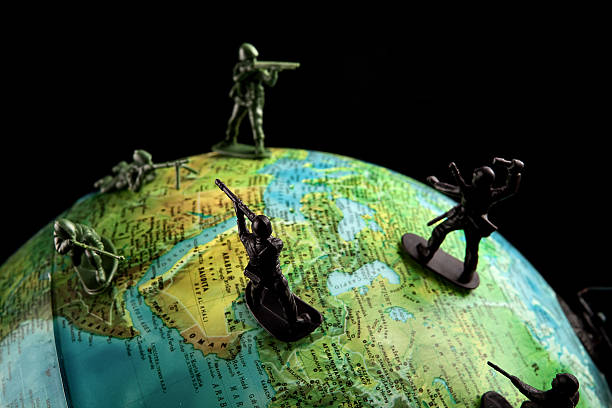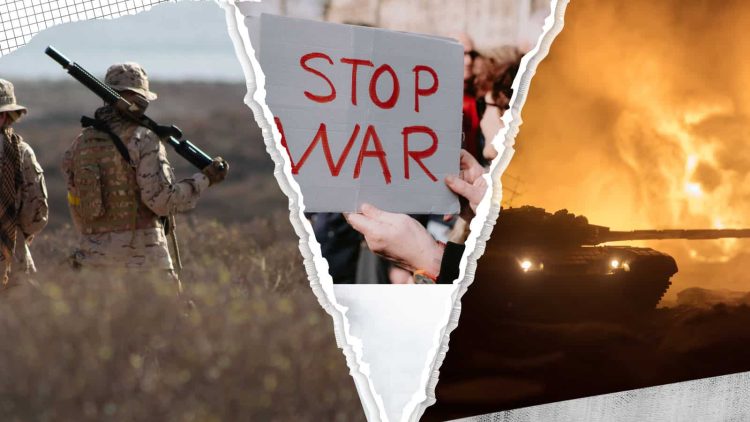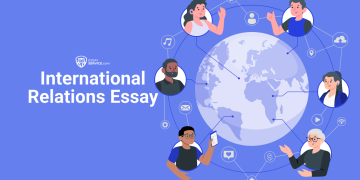Executive Summary
International conflicts remain among the gravest threats to global stability in the 21st century. The recurrence of wars—whether in Eastern Europe, the Middle East, or Africa—underscores the limits of existing security frameworks and the urgent need for innovative strategies in diplomacy, conflict prevention, and peacebuilding.
This policy-oriented article examines the root drivers of contemporary conflicts, analyzes historical and present-day diplomatic efforts, and proposes comprehensive approaches that combine hard power, soft power, and cooperative multilateralism.
I. Understanding the Drivers of Contemporary Conflicts
1. Geopolitical Competition
- Shifting Power Balances: The transition from a U.S.-led unipolar order to a more multipolar landscape has intensified rivalries among major powers.
- Regional Hegemonies: Powers such as Russia, China, India, and Turkey seek to secure spheres of influence, often colliding with Western alliances.
2. Resource and Environmental Pressures
- Control over oil, gas, rare earth minerals, and water resources remains a catalyst for territorial disputes.
- Climate change exacerbates competition over arable land, fisheries, and migration corridors.
3. Ideological and Identity-Based Tensions
- Persistent divides along ethnic, religious, and national lines fuel many internal and cross-border conflicts.
- The resurgence of populism and nationalist rhetoric undermines multilateral cooperation.
4. Technological and Information Warfare
- Cyber operations, disinformation campaigns, and drone warfare have blurred the distinction between war and peace.
- The absence of robust global norms for regulating AI and emerging military technologies has heightened security uncertainties.
II. Lessons from History: Diplomatic Milestones and Failures
1. Post–World War II Institutions
- The United Nations, Bretton Woods system, NATO, and regional organizations helped maintain peace in large parts of the world.
- However, veto politics in the UN Security Council often limits rapid responses to emerging crises.
2. The Helsinki Accords (1975)
- Demonstrated how agreements on human rights, economic cooperation, and military transparency can reduce tensions even among adversaries.
3. The Oslo Peace Process (1990s)
- Initially raised hopes for resolving the Israeli–Palestinian conflict but faltered due to lack of sustained political will and asymmetric power dynamics.
4. Rwanda and the Balkans
- Failures to act decisively during genocide and ethnic cleansing revealed the dangers of delayed international intervention.
5. Post-Cold War Treaties
- Treaties like the Intermediate-Range Nuclear Forces (INF) Treaty and various arms-control agreements demonstrated the role of dialogue but were later abandoned, underscoring fragility in trust-building.
III. Balancing Hard Power and Soft Power
1. Deterrence and Defense
- Credible deterrence remains necessary to prevent aggression by revisionist states.
- Defensive alliances such as NATO must adapt to new threats, including hybrid warfare.
2. The Limits of Military Solutions
- Military interventions often fail to address the underlying political and social drivers of conflict.
- Afghanistan’s two decades of foreign involvement show the high costs of relying primarily on force.
3. Economic Statecraft
- Sanctions and trade restrictions can pressure aggressors but also harm civilian populations and risk unintended escalation.
- Positive economic incentives—aid, market access, infrastructure development—can help integrate potential spoilers into cooperative frameworks.
4. Soft Power Diplomacy
- Cultural exchanges, educational programs, and people-to-people initiatives foster trust and counter extremist narratives.
- Nations with effective soft power, such as facilitating dialogues and offering humanitarian support, can reduce the appeal of militarized solutions.
IV. Preventive Diplomacy and Early-Warning Mechanisms
1. Mediation and Track II Diplomacy
- Track II initiatives—engaging scholars, religious leaders, and local influencers—often open communication channels when official negotiations stall.
- The 2015 Iran nuclear deal showcased the role of quiet, sustained diplomacy.
2. Confidence-Building Measures
- Agreements on arms verification, troop withdrawals, or neutral observation missions can reduce suspicion between adversaries.
3. Regional Conflict Prevention
- Regional organizations like the African Union (AU) and Association of Southeast Asian Nations (ASEAN) play increasingly important roles in resolving local disputes.
- Regional frameworks often enjoy greater legitimacy among local actors.
4. Technology in Prevention
- Satellite monitoring, data analytics, and AI-based forecasting improve the ability to detect signs of imminent conflict.
- However, ethical guidelines and transparency are needed to prevent misuse or bias in these technologies.

V. Peacebuilding in Fragile and Post-Conflict States
1. Political Inclusion
- Durable peace requires inclusive governance that integrates former combatants, minorities, and marginalized communities.
- Exclusion often leads to renewed violence, as seen in South Sudan’s fragile peace accords.
2. Transitional Justice and Rule of Law
- Accountability for war crimes helps deter future atrocities.
- Mechanisms like Truth and Reconciliation Commissions—though imperfect—can foster collective healing.
3. Economic Reconstruction
- Investments in infrastructure, jobs, and education reduce incentives for joining armed groups.
- Donor coordination is essential to avoid fragmented, unsustainable reconstruction efforts.
4. Social Cohesion and Trust-Building
- Rebuilding local institutions, community councils, and interethnic networks is often as important as physical reconstruction.
- Grassroots initiatives, especially those led by women and youth, can help mend the social fabric.
VI. Multilateralism in an Era of Rivalry
1. Reforming the United Nations
- Expanding the Security Council to include emerging powers could increase legitimacy and responsiveness.
- Strengthening the UN’s capacity for preventive deployment and rapid humanitarian response remains critical.
2. Role of Regional Blocs
- The European Union has provided a model for integrating economic and political mechanisms to reduce conflict among member states.
- Organizations like ECOWAS in West Africa and ASEAN in Asia can complement global efforts.
3. Public–Private Partnerships
- Global corporations and NGOs influence conflict dynamics through investments, media narratives, and supply chain ethics.
- Responsible business practices—such as avoiding conflict minerals—support peacebuilding.
VII. Future Challenges and Strategic Outlook
1. Climate-Induced Conflicts
- Rising temperatures, water shortages, and natural disasters can trigger mass displacement and competition for resources.
- Anticipating these risks requires integrating climate adaptation into security planning.
2. Great-Power Rivalry in Emerging Technologies
- AI, quantum computing, and biotechnology will increasingly shape military and economic advantages.
- Global norms and confidence-building measures for tech governance must be a priority.
3. Hybrid Conflicts and Non-State Actors
- The rise of cyber militias, private military contractors, and transnational extremist groups challenges traditional state-centric diplomacy.
4. Youth and Civil Society Engagement
- Young people and grassroots activists play essential roles in peace movements, digital diplomacy, and rebuilding war-torn societies.
- Their inclusion in policymaking can create more sustainable peace.
Policy Recommendations
- Strengthen Early-Warning Systems: Invest in predictive analytics and enhance coordination between UN agencies, regional organizations, and civil society.
- Prioritize Inclusive Governance: Make political participation a non-negotiable component of peace accords.
- Reform Multilateral Institutions: Adapt UN and other global governance structures to reflect 21st-century realities.
- Integrate Climate and Security Planning: Address environmental stressors as part of peace strategies.
- Expand Soft Power Investments: Increase funding for education, cultural diplomacy, and interfaith dialogues.
- Regulate Emerging Technologies: Promote international norms for responsible use of AI, drones, and cyber tools.
- Support Local Peacebuilders: Channel resources to grassroots organizations that know the context and command local trust.
Conclusion: Toward a Preventive Paradigm
Conflict prevention is far less costly—economically, politically, and morally—than managing wars after they erupt.
A world beset by climate pressures, technological disruptions, and renewed great-power rivalry cannot rely solely on military deterrence.
Instead, it must embrace a preventive paradigm, where diplomacy, inclusive governance, and multilateral cooperation become the default instruments of global security.
Only by bridging the gap between power politics and human security can the international community hope to reduce the recurring tragedies of war and move closer to a durable peace.

















































